Get PeakVisor App
Sign In
Search by GPS coordinates
- Latitude
- ° ' ''
- Longitude
- ° ' ''
- Units of Length

Yes
Cancel
Share ×

Scan the QR code and open PeakVisor on your phone
❤ Wishlist ×
Choose
Delete
A land of rich culture, fantastic cuisine, and rugged mountainscapes, Argentina is a vibrant country located in the southeastern part of South America. Argentina contains 7,548 named mountains, the highest and most prominent of which is Cerro Aconcagua (6,961m/22,838ft).
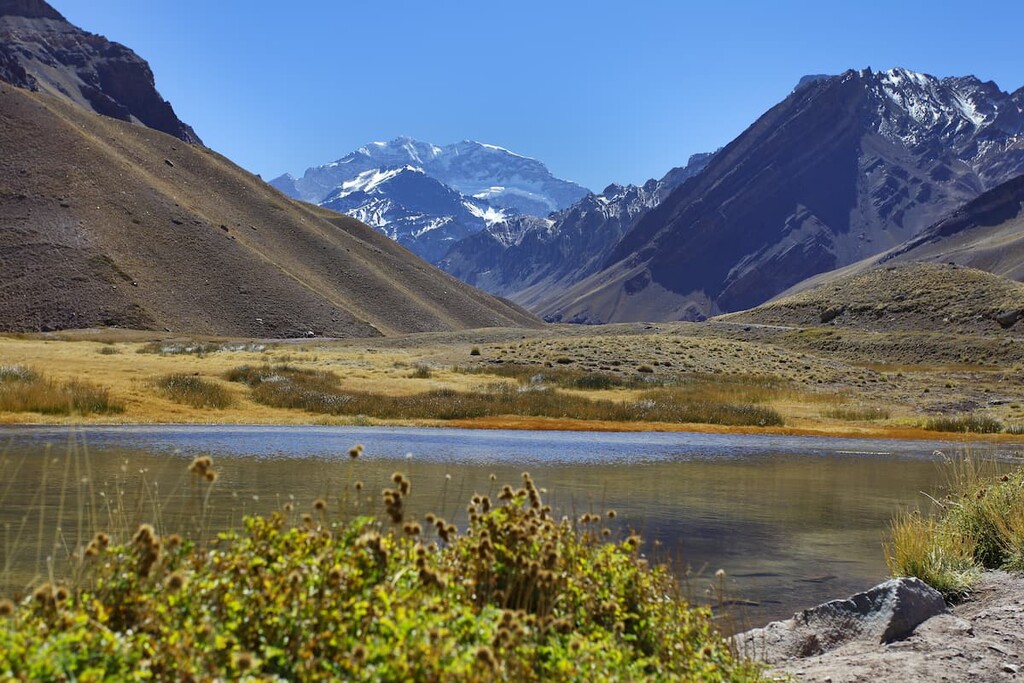
Argentina (officially the Argentine Republic/República Argentina) is a large country located in the southeastern portion of South America.
With a total mainland land area (not counting claimed overseas territories) of 2,780,400 square kilometers (1,073,500 square miles), Argentina is the second largest country in South America, the fourth largest in the Americas, and the eighth largest in the world.
The country of Argentina shares its borders with a number of other nations, including Uruguay to the east, Brazil to the north and east, Paraguay to the north, Bolivia to the north, and Chile to the west. It is also located to the west of the Falkland Islands (Islas Malvinas) and South Georgia (La islas Georgias del Sur), which Argentina claims as its own, though this is a matter of international disagreement with the United Kingdom.
Argentina is officially divided up into twenty-three provinces (provincias) as well as an autonomous city (Buenos Aires, not to be confused with the province of Buenos Aires). Not counting any claims to overseas territories, Argentina can also roughly be divided up into about 7 or 8 regions, each of which has its own unique geographical highlights.
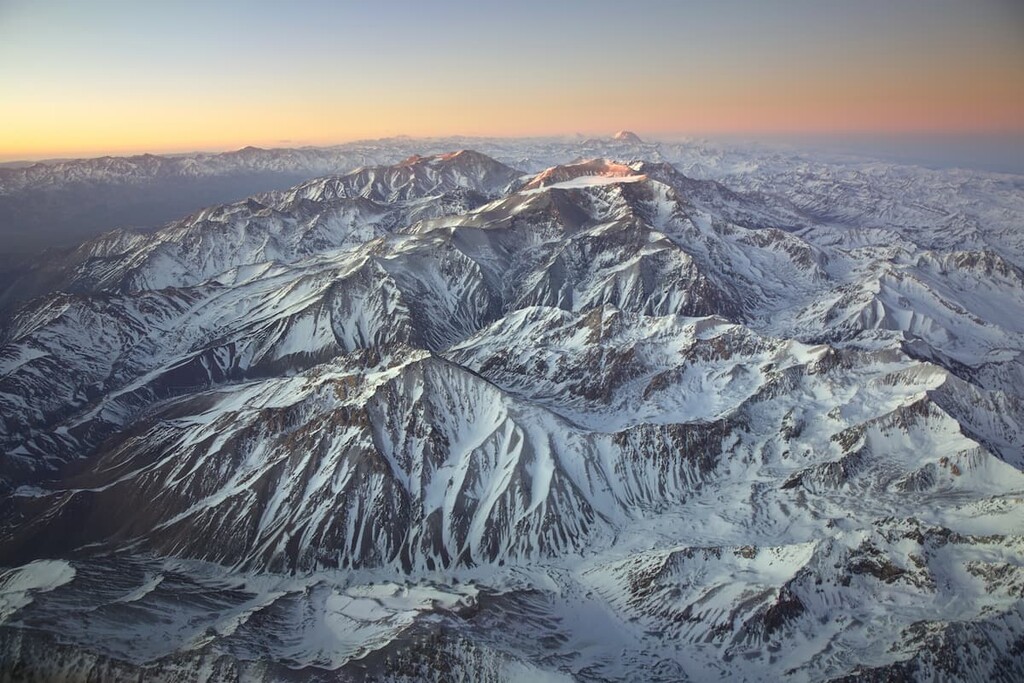
The Argentine Northwest (Noroeste Argentino), as the name suggests, is located in the northwestern part of the country. This region includes the provinces of Jujuy, Catamarca, Salta, and Tucumán and is located along the borders of Paraguay, Bolivia, and Chile.
Here, the landscape is dominated by a mix of fertile valleys, the Yungas jungle, the Andean Plateau (Altiplano), and the Andes Mountains. It is considered to be subtropical so the climate is generally quite hot.
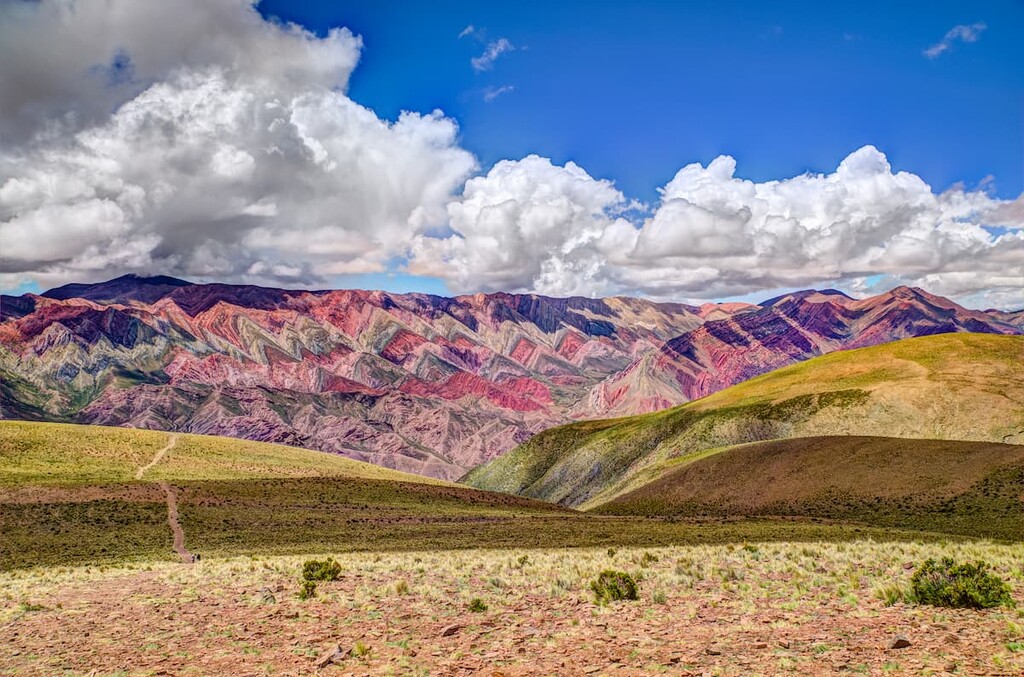
Nevertheless, the northwestern part of Argentina is also a popular tourist destination thanks to its many parks and rich cultural heritage. Some of the most popular parks in the region include:
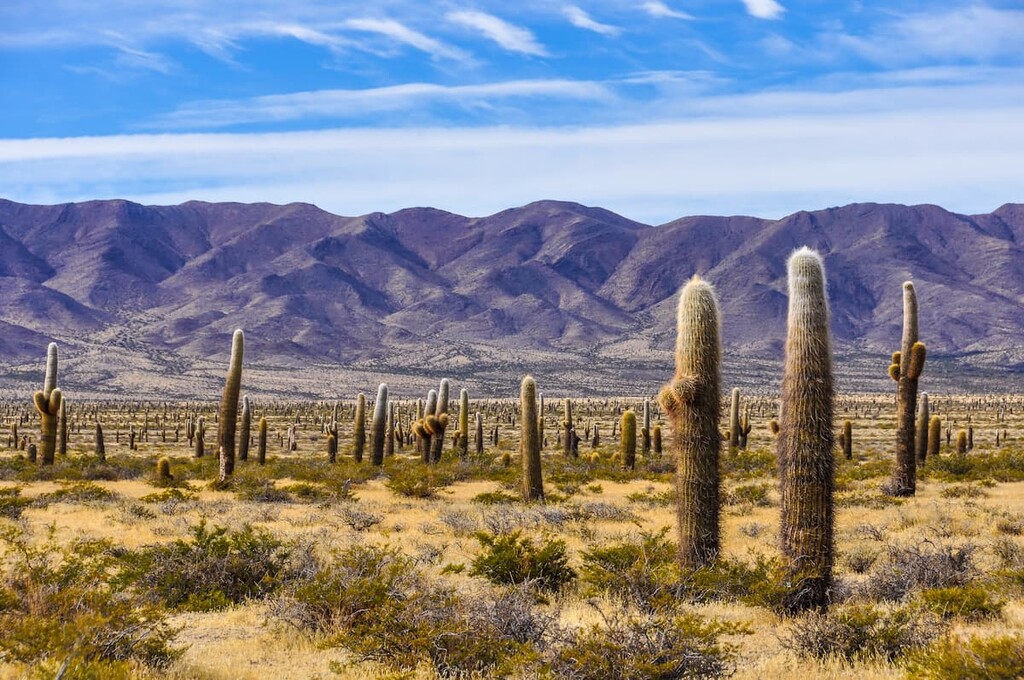
Located in north-central Argentina, the Gran Chaco (a.k.a. the Dry Chaco) is a sparsely populated lowland region that contains parts of Santiago del Estero, Chaco, and Formosa provinces. This region technically extends north into Bolivia, Paraguay, and the Brazilian states of Mato Grosso do Sul and Mato Grosso.
The Gran Chaco region is generally quite flat and its highly fertile soil makes it a fairly popular place for agriculture. In fact, the yerba mate plant, which is a key ingredient of the über-popular drink mate, is often grown in this region.

This region contains a number of protected areas, such as:
Referring not to the historical area in West Asia that’s now part of Kuwait, Iraq, Turkey, Syria, and Iran, the Mesopotamia region of Argentina is a completely separate entity located in the northeastern part of the country.
This region is situated along the country’s border with Uruguay, Paraguay, and Brazil and it contains the provinces of Misiones, Corrientes, and Entre Ríos. In fact, the region was given the name “Mesopotamia” because the first Spanish colonizers to come to the region thought that the two parallel rivers were reminiscent of the Tigris and Euphrates in Asia.
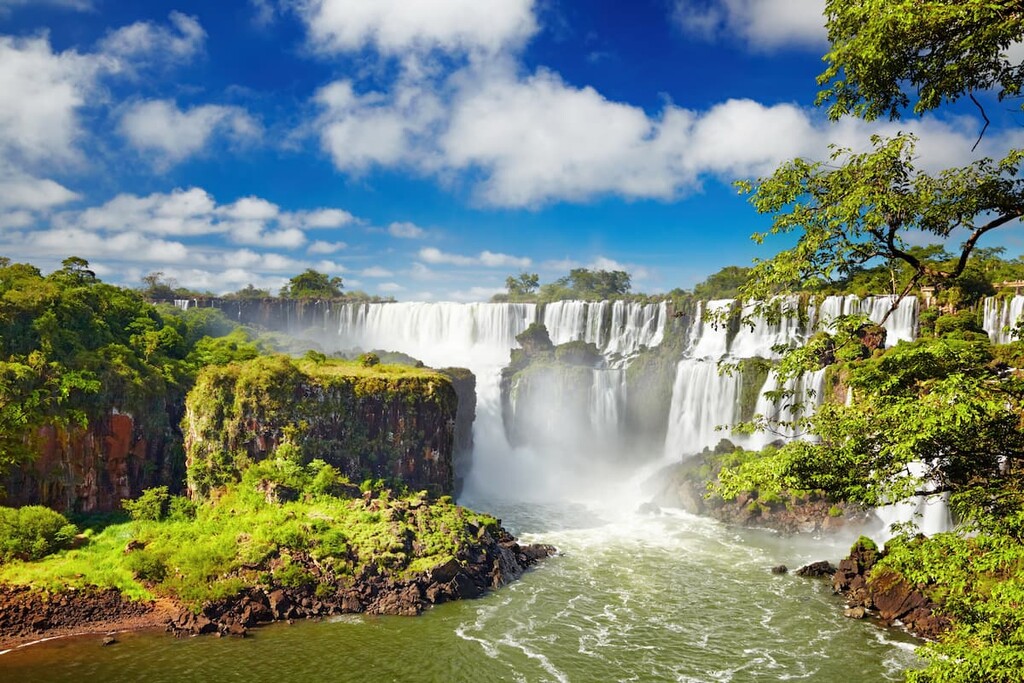
Mesopotamia is also another highly agricultural region, particularly when it comes to the production of mate, tobacco, rice, and citrus. It is also home to one of the country’s most popular tourist attractions: Iguazú Falls.
The region contains a large number of parks and protected areas, such as:
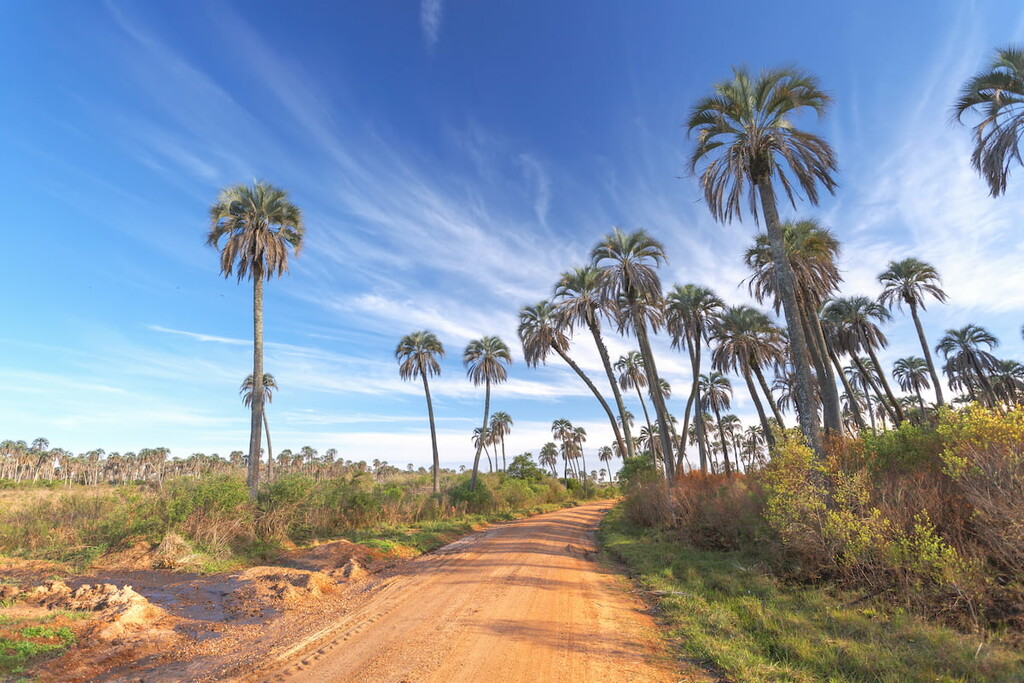
The Cuyo Region includes much of the west-central part of Argentina, including its wine-producing areas. This includes Mendoza, San Luis, San Juan, and La Rioja provinces, the western half of which is highly mountainous.
The region is particularly known for its viticulture. In fact, the Cuyo region produces about 80% of all of the wine that’s produced in Argentina. Wines from this region are highly regarded around the world.
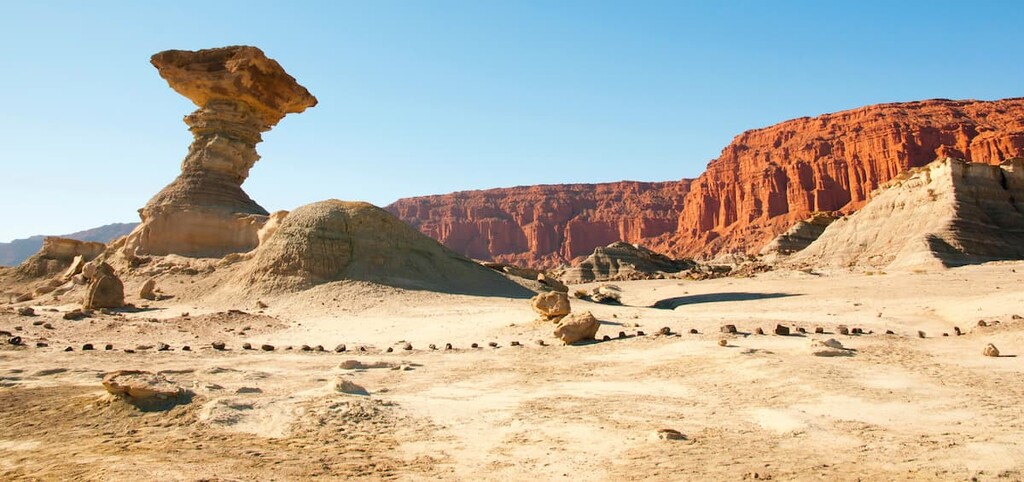
Within the region, there are a number of highly popular parks and outdoor recreation areas. Perhaps the biggest attraction of the area is Aconcagua, which is the tallest peak in Argentina, as well as the tallest peak outside Asia. Major parks in the region include:

One of the largest regions in Argentina, the Pampas (Las Pampas) are a massive lowland area that stretches across Buenos Aires, La Pampa, Córdoba, and Santa Fe provinces, as well as Uruguay and part of Brazil.
This region is very flat, though there are some isolated hills scattered throughout. Las Pampas is one of the largest agricultural regions in the country. The primary crops produced here include grains and cereals, such as wheat, barley, and corn, as well as soy and potatoes.
While the Pampas are quite agricultural, there are a few parks and recreation areas to be found. Some of the more popular parks in the region include:
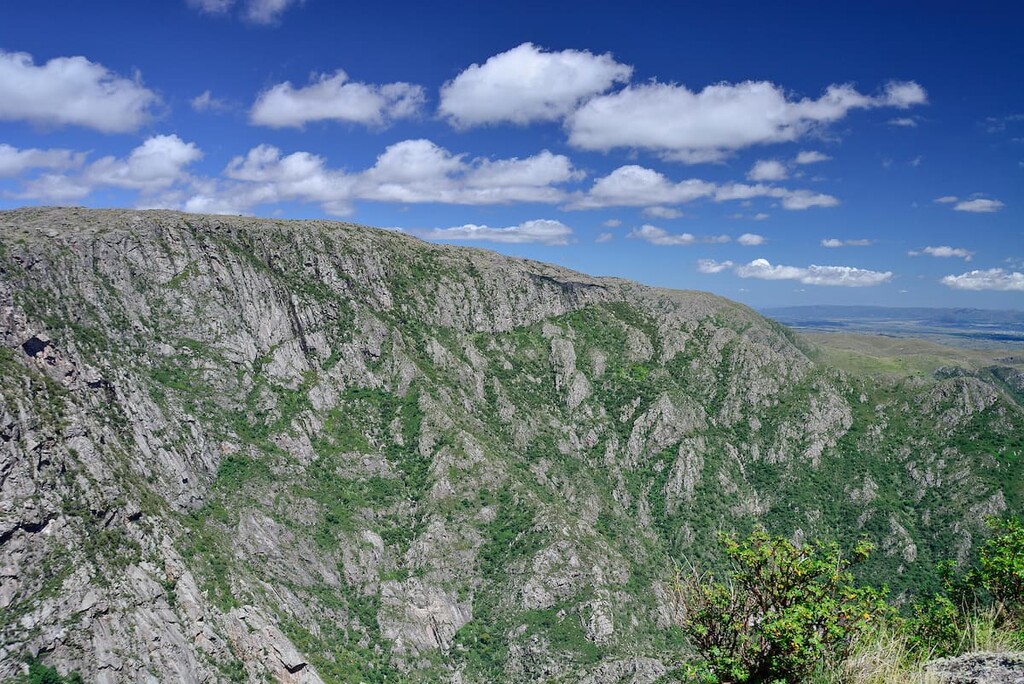
Perhaps the most mountainous region in Argentina, Patagonia refers to the entire southern portion of the country. Patagonia contains a number of different provinces, including Tierra del Fuego, Chubut, Neuquen, Santa Cruz, and Río Negro, thoguh the technical definition of “Patagonia” as used in common parlance also refers to the southern half of Chile.
These days, Patagonia’s low-land areas are mostly used for sheep farming, mineral extraction, and the like.
Interestingly, there is also a large Welsh community in this part of Argentina known as Y Wladfa (or Y Wladychfa Gymreig). This makes Argentina home to the second largest Welsh speaking population in the world, after Wales and the rest of the United Kingdom, of course.
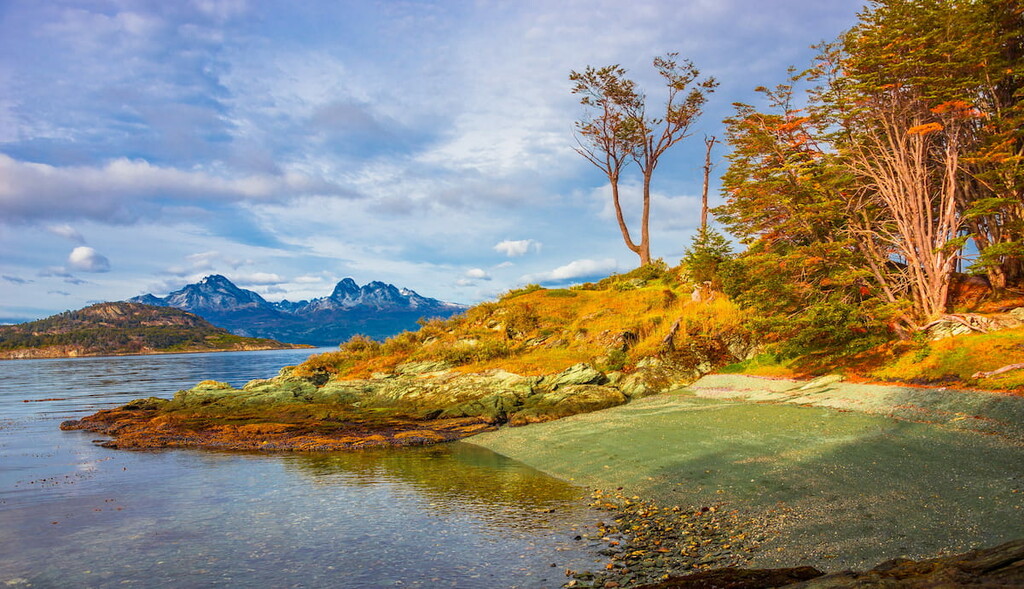
That being said, what makes Patagonia really famous is its stunning mountainscapes. Technically there is a bit of a border dispute along the Southern Patagonia Icefield in the western half of the region, but it is still a very popular tourist destination.
This region contains many national parks, such as:
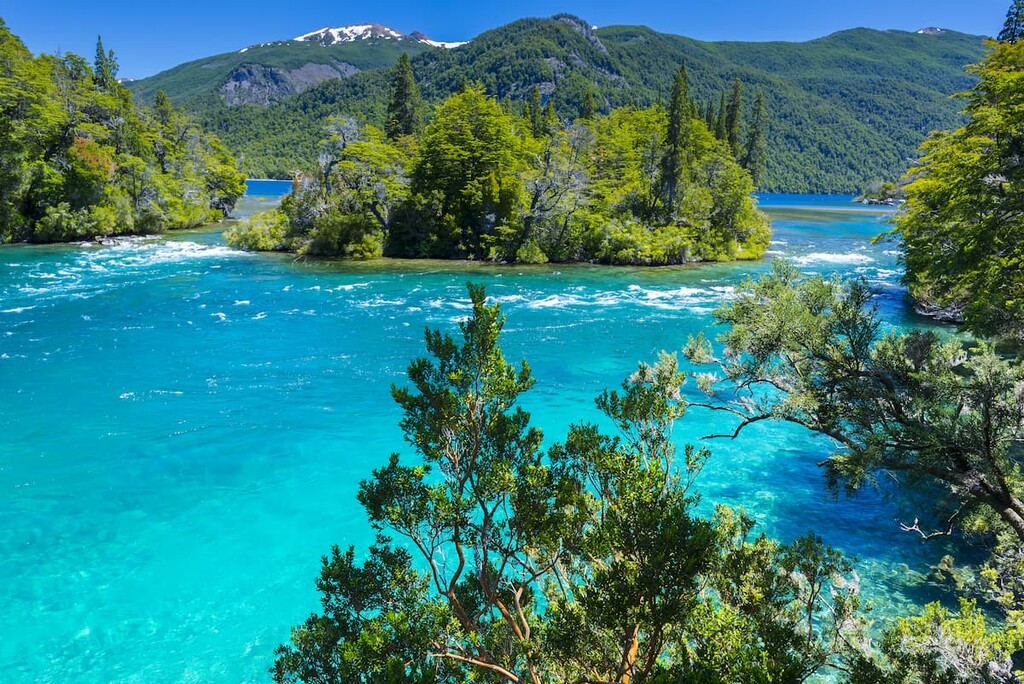
Furthermore, Patagonia also contains many monuments and reserves, such as:
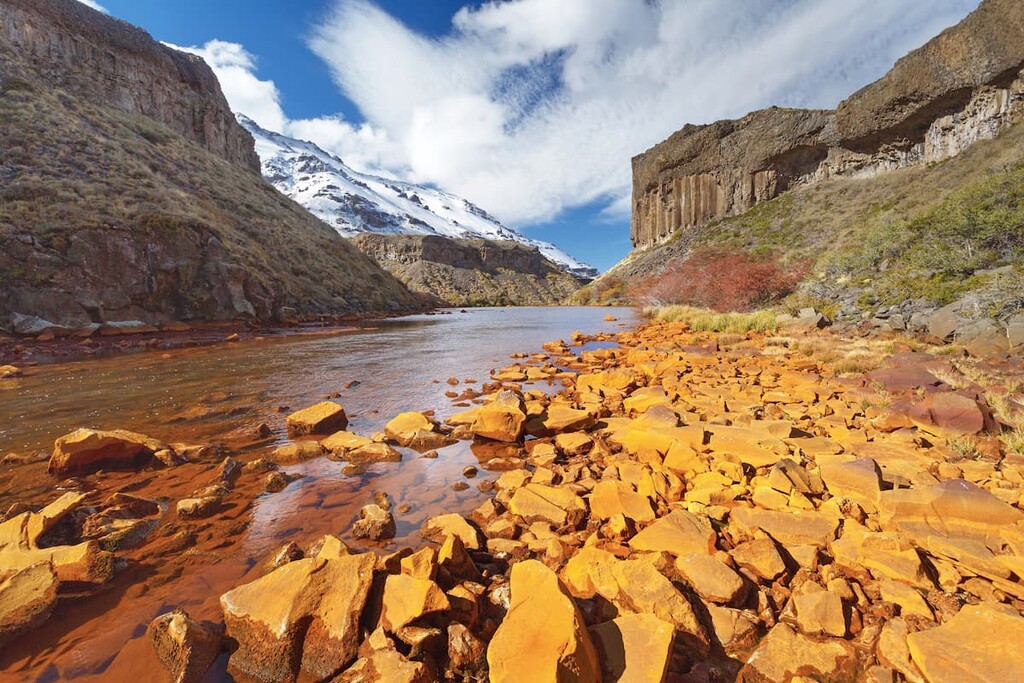
Within Argentina, the major mountain range is the Andes, which runs down the western edge of the country along its border with Chile.
The Andes are one of the world’s major mountain ranges, extending some 7,000 km (4,350 mi) from Venezuela in the north all the way through Colombia, Ecuador, Peru, and Bolivia before entering the shared border of Chile and Argentina.
Furthermore, the Andes Mountains are a part of an even larger chain of mountains known as the American Cordillera. This mountain system extends from Tierra del Fuego in the south, all the way north, through Central America before entering Mexico, crossing the United States, and Canada and terminating at the Brooks Range in northern Alaska.
Geologically, the Andes formed as a result of widespread subduction of the Paciifc Plate (and other minor plates) under the South American Plate. They are a part of a major volcanically and seismically-active region known as the Ring of Fire, which is located around the edge of the Pacific Ocean.
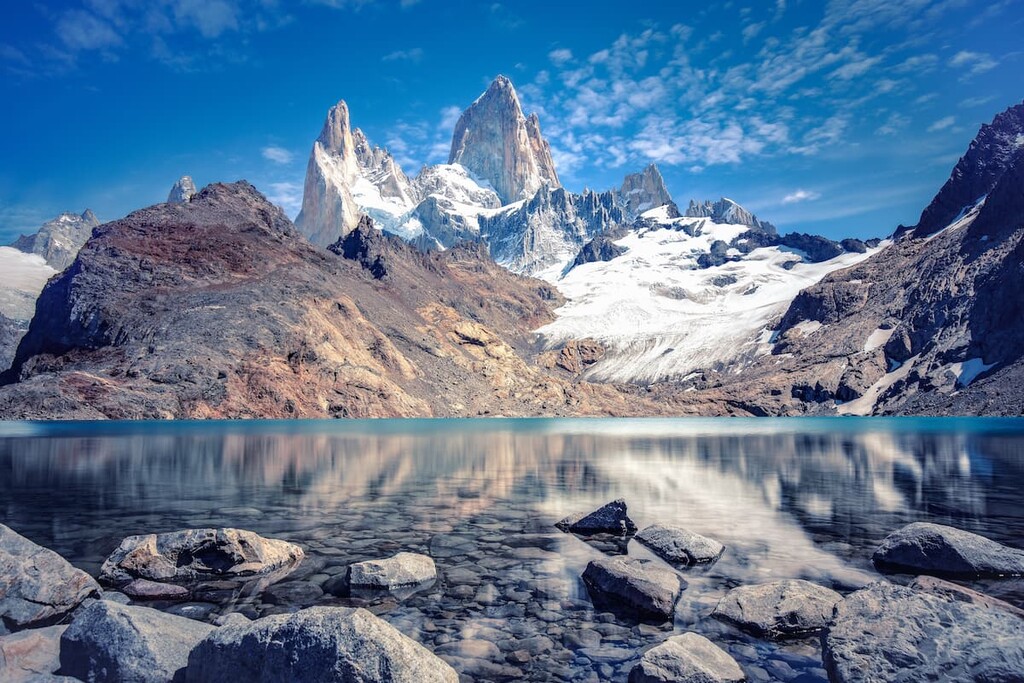
Argentina is a very mineral and resource-rich country with large deposits of zinc, tin, boron, manganese, lead, iron ore, uranium, and lithium, as well as some petroleum. It also has some gold and silver deposits. However, the country has what is believed to be the world’s third-largest lithium reserve, which is set to become strategically important in the age of digitization.
Major peaks in Argentina include Cerro Aconcagua, Nevado Ojos del Salado, Monte Pissis, Cerro Mercedario, Monte Fitz Roy, Cerro Torre, and Torre Egger (the latter three are in disputed territory).
As one of the most biodiverse countries in the world, Argentina is a veritable treasure trove of flora and fauna. The country’s vast land area and wide array of elevations means that it is home to a great number of different ecoregions.
Nevertheless, the majority of the central part of the country is situated in the rain shadow of the Andes, which has a drastic impact on its ecosystems. Meanwhile, many of the northern regions of Argentina in the Gran Chaco are considered to be subtropical with stunning forests and wetlands throughout the landscape.
At the same time, Patagonia is home to its own mix of forests, most of which are predominately coniferous, particularly on the island of Tierra del Fuego.
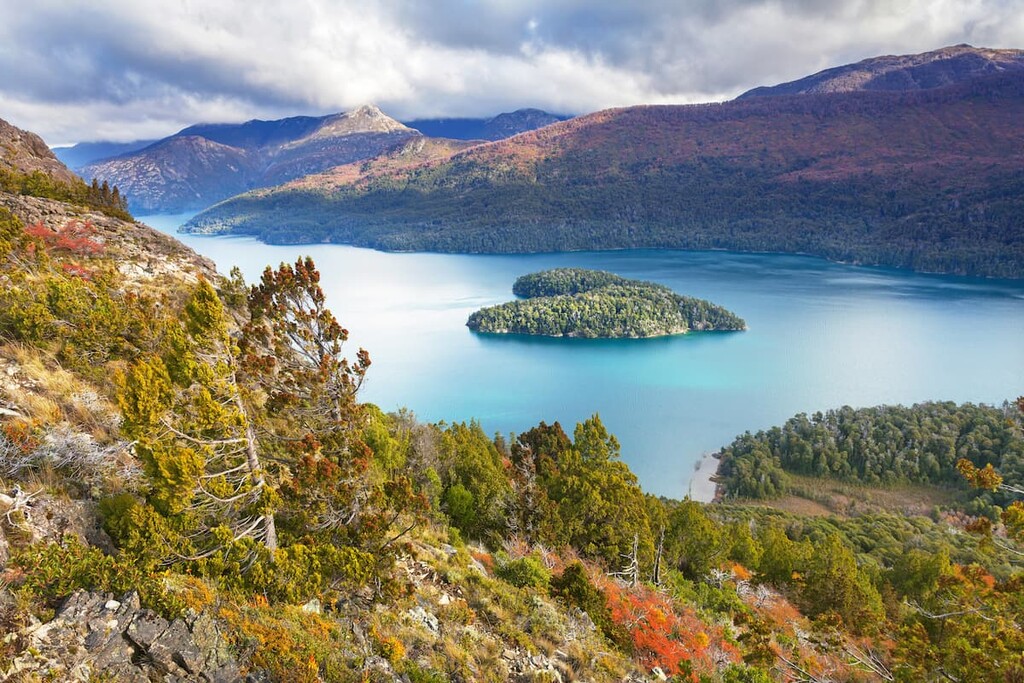
Wildlife is particularly abundant in Argentina. Some of the many species that can be found in the northern part of the country include jaguars, mountain lions, caimans, tapirs, coati, capybaras, and tegus.
In the central parts of Argentina, the more common animals include armadillos, pampas cats, giant anteaters, rhea, maned wolves, cavias, and maras. Furthermore, the western mountain regions are home to guanacos, lamas, vicuñas, Andean mountain cats, viscachas, kodkods, and even the elusive Andean condor.
Finally, in southern Argentina, you might be able to spot mountain lions, pudús, and huemules, as well as the non-native wild boar. Southern Argentina is also home to plenty of marine animals, including elephant seals, sea lions, fur seals, and Magellanic penguins.
The area that is now the country of Argentina has been home to humans since time immemorial. Argentina is located on the site of the traditional homelands of many peoples, including the 35 different Indigenous groups in the country.
Some of the most populous Indigenous groups in whose ancestral homelands include parts of Argentina include the Mapuche, Diaguita, Wichí, Qom, Kolla, Huarpe, and Guarani.
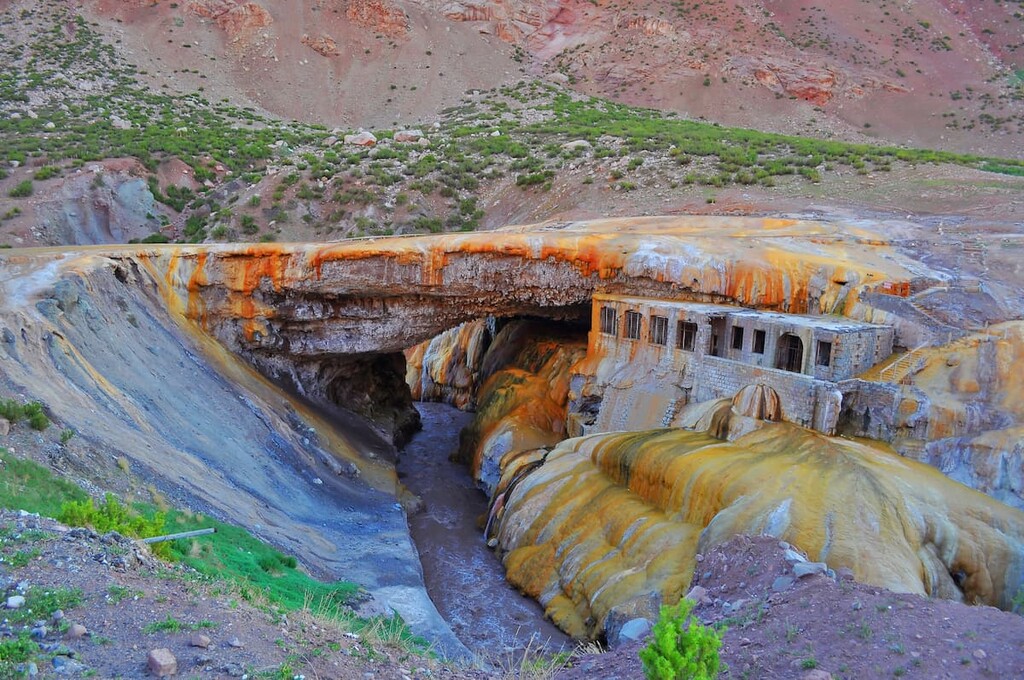
The first people of European descent to have arrived in what is now Argentina were likely sailors from Portugal, including Amerigo Vespucci (actually of Italy) and Gonçalo Coelho who came to the continent in the early sixteenth century.
A few decades later, in 1536, Pedro de Mendoza of Spain established a community at what is now the location of Buenos Aires, though this settlement was later abandoned. By the end of the sixteenth century, however, the community at what is now Buenos Aires was re-established making the area around the Río de la Plata particularly important to the Spanish crown.
In the 1770s, the region was designated as part of the Viceroyalty of the Río de la Plata, which also included parts of what is now Paraguay, Bolivia, and Uruguay. This viceroyalty was short-lived especially after the Spanish were defeated at the Battle of Trafalgar during the Napoleonic Wars and after multiple British attempts at invading Buenos Aires.
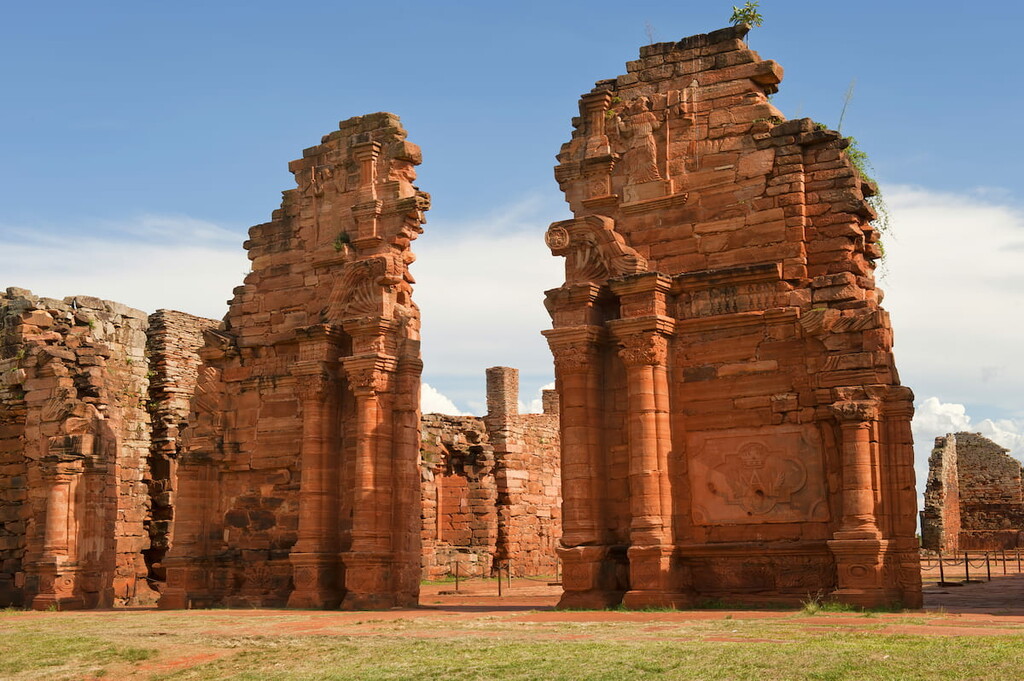
Like most of the rest of South America, Argentina gained its independence in the early part of the nineteenth century, having initially declared its full independence in 1816.
Not long afterward, the country fell into a prolonged period of civil war. The country ratified a constitution in 1853 that is still in force today and in 1862, the country became unified under President Bartolomé Mitre.
The proceeding decades saw a number of major political shifts within the countries and the establishment of a handful of different administrations. Argentina was hit hard by the Great Depression, during which time it entered a tumultuous period known as the “Infamous Decade”.
Afterward, Argentina underwent a revolution, which then led to the rise of President Juan Perón in the late 1940s and early 1950s. The 1950s and 1960s also saw a number of coups d’état and civil unrest which produced fairly fragile and rapidly shifting governments that lasted until the establishment of the new democracy in the 1980s.

In more recent years, Argentina has grown rapidly and the country has seen a number of reforms. As a highly resource rich country with a large population, Argentina’s emerging economy is on the rise, though it has had some issues with inflation and debt in the past.
These days, Argentina remains a highly popular tourist destination, thanks to its fantastic array of cultural sites, mountainscapes, and vibrant cities.
Argentina is home to a truly stunning array of outdoor recreation destinations that run the gamut in terms of scenery and landscapes. Here are some of the most popular places to check out in the country:
Arguably one of the most heavily visited sites in Argentina, Iguazú National Park (Parque Nacional Iguazú), is a small federally protected area in the northeastern part of the country. The park contains 2 named mountains, the highest and most prominent of which is Cerro Chapá.
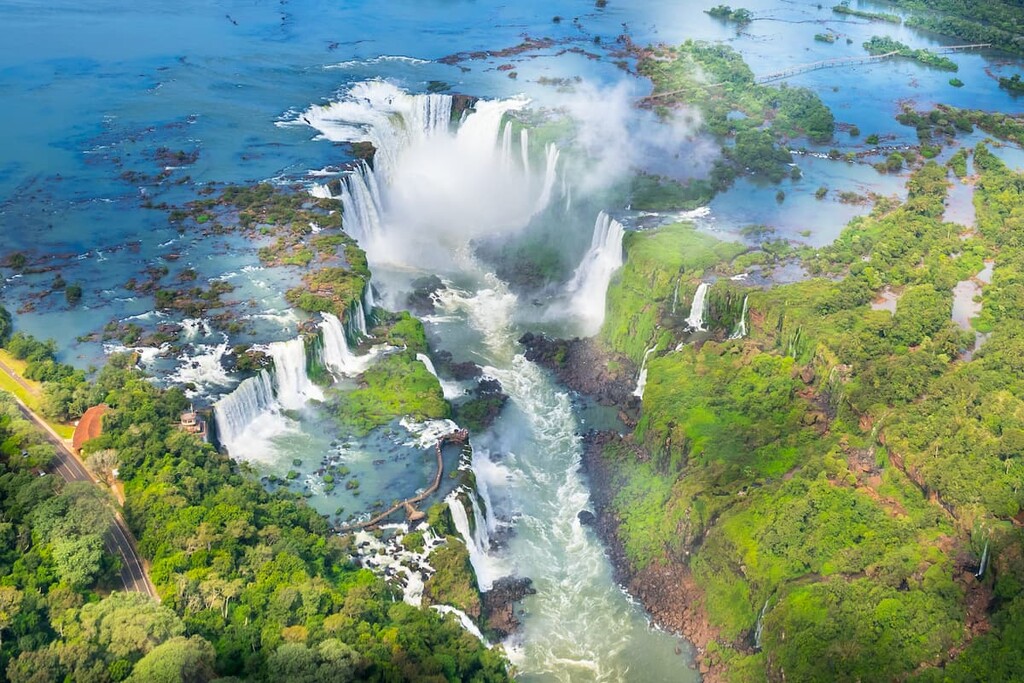
Iguazú is best known for its world-famous Iguazú Falls (las cataratas del Iguazú/Cataratas do Iguaçu), which are one of northern Argentina’s biggest tourist attractions thanks to their 275 separate drops.
It’s also worth noting that Iguazú shares a border with the Brazilian park of the same name (Parque Nacional Iguaçu) in the state of Paraná, which is also awesome to visit.
Although Iguazú might look close to Buenos Aires on a map, however, it is about 15 hours away by road. Therefore, many visitors to the park chose to fly to either Cataratas del Iguazú International Airport (IGR) in Argentina or Foz do Iguaçu Airport (IGU) in Brazil. Do pay attention to any visa requirements before you depart, however, if you do wish to visit both sides of the falls.
Argentina’s southernmost national park, Tierra del Fuego National Park (Parque Nacional Tierra del Fuego) is a stunning region of rugged mountains and spectacular waterfalls. The park contains 17 named mountains, the highest of which is Cerro Tonelli, and the most prominent of which is Cerro Lago.
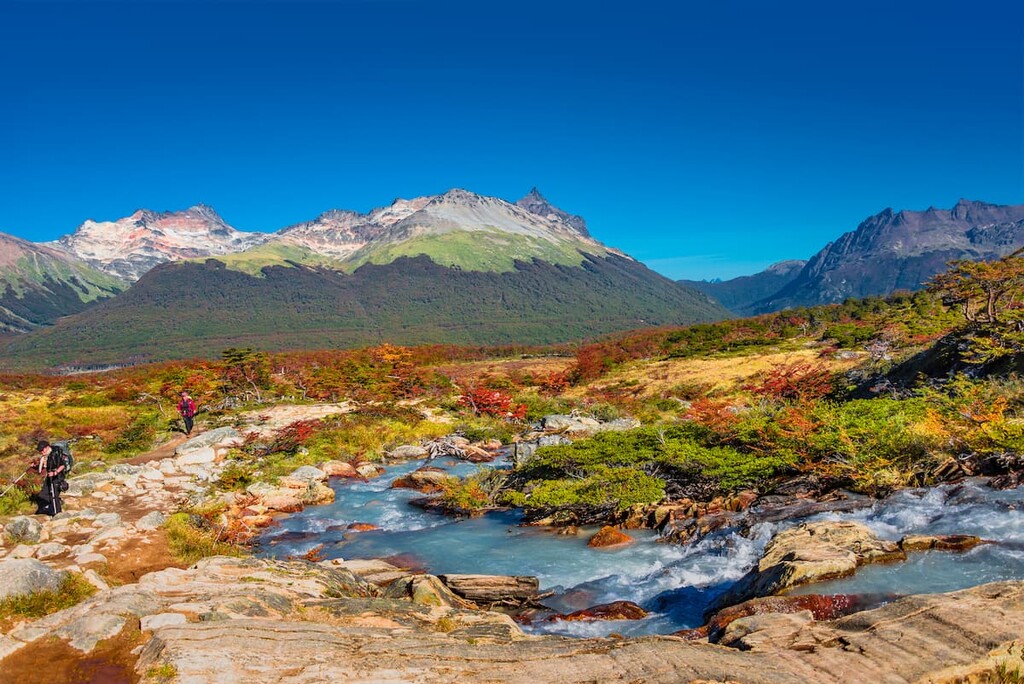
Situated just outside of the city of Ushuaia, Tierra del Fuego is a must-visit if you’re in the region. There are a number of popular hiking trails in the park as well as opportunities to see some of the region’s rich wildlife.
Home to the bulk of the Patagonia Ice Cap, Los Glaciares National Park (Parque Nacional Los Glaciares) is a federally protected area situated in southwestern Argentina. The park contains 111 named mountains, the highest and most prominent of which is Monte Fitz Roy.
Technically speaking, the majority of Los Glaciares is located in disputed territory, though it is a heavily mountainous region that’s dominated by the Patagonia Ice Cap. Here, you can find some of the most famous mountains in Argentina, as well as plentiful hiking and backpacking opportunities.
Plus, the Perito Moreno Glacier (Glaciar Perito Moreno) is also located within the park, which is a must-visit destination if you’re in the area.
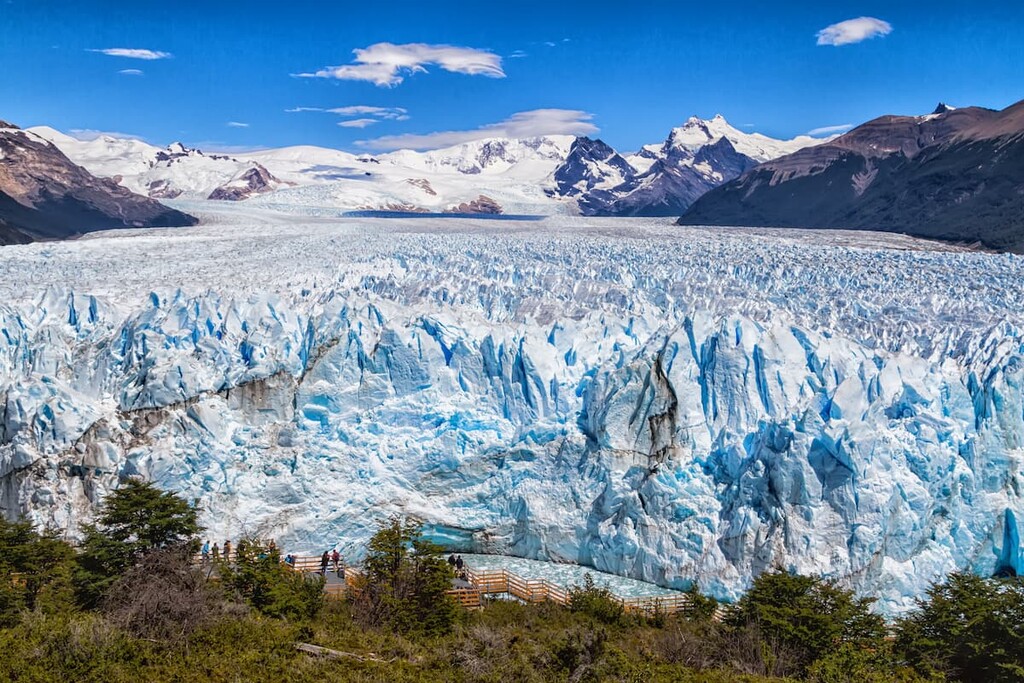
Aptly named, Aconcagua Provincial Park (Parque Provincial Aconcagua) is home to the highest peak in Argentina and all of the Western and Southern Hemispheres: Cerro Aconcagua. There are 24 total named mountains in the park, the highest and most prominent of which is, of course, Cerro Aconcagua.
The park completely surrounds Aconcagua, making it a popular destination for climbers in the region. Most climbers who attempt Aconcagua do so via the Normal Route, though hiring a climbing guide is highly recommended unless you’re already an experienced mountaineer.
Besides mountaineering, there are a number of day hiking and backpacking opportunities in the park to check out, many of which offer great views of Aconcagua itself.
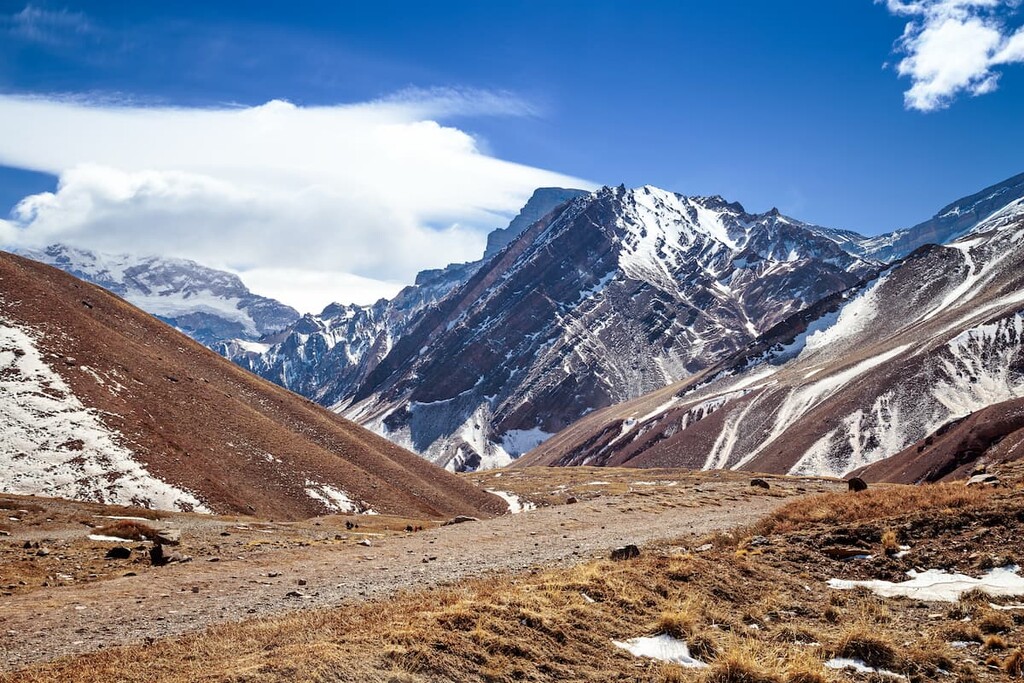
Looking for a place to stay during your visit to Argentina? Here are some of the best cities to check out:
The capital and most populous city in Argentina, Buenos Aires is located in the northeastern part of the country along the Río de la Plata. Buenos Aires is home to about 3 million people, though around 15.5 million people live in its metropolitan area.
Buenos Aires is known for its stunning and oftentimes eclectic European architecture and fantastic cultural scene. The city also has two main airports, including the international airport Ezeiza and Aeroparque Jorge Newberry, the latter of which offers great domestic air connections.
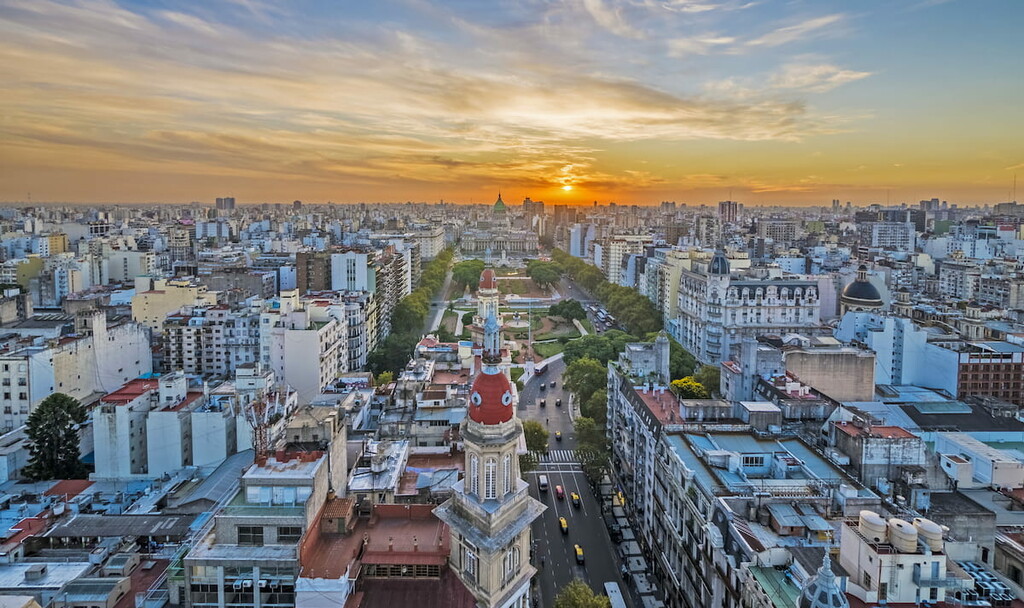
Located in west-central Argentina along the road that connects Buenos Aires to the city of Santiago in Chile, Mendoza is one of the country’s major metropolitan areas. The city is a popular tourist destination because it is at the heart of the country’s major wine producing region.
It is also a must-visit if you’re looking to climb Aconcagua as Mendoza offers great access to the Argentine Andes.
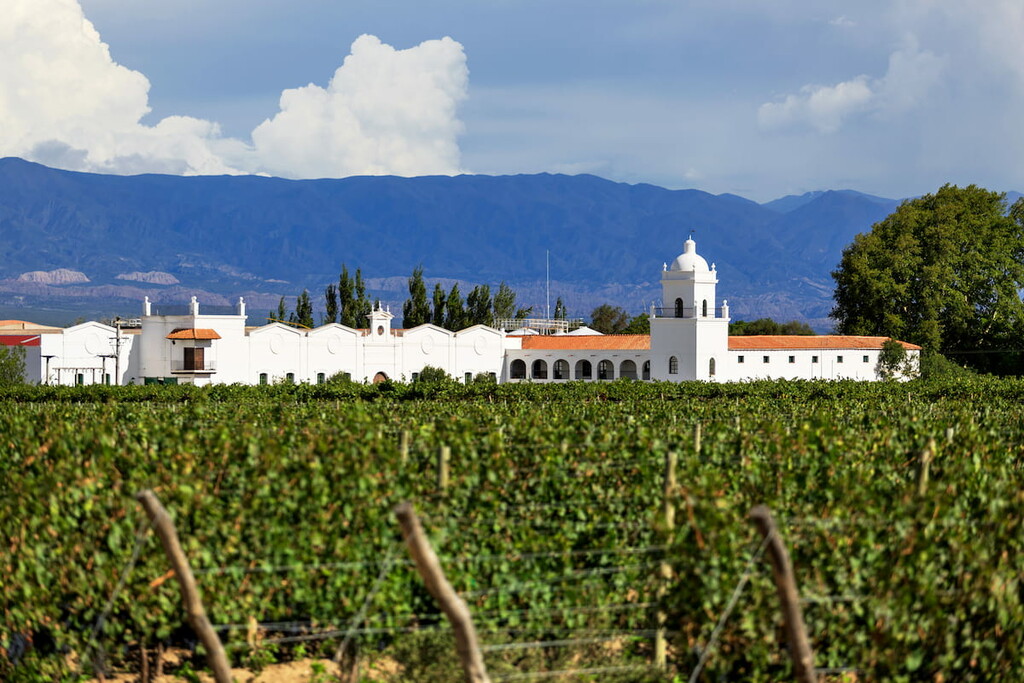
With a population of about 60,000 people, Ushuaia is considered to be the southernmost city in the world. Ushuaia is located in Tierra del Fuego and it is a major tourist destination in the region.
In addition to being a hub of tourism for Tierra del Fuego, however, Ushuaia is also a starting point for the vast majority of tourist ships that head to Antarctica. Furthermore, Ushuaia has one of the busiest airports in the region, so it’s a good place to fly into if you’re looking to visit southern Argentina.
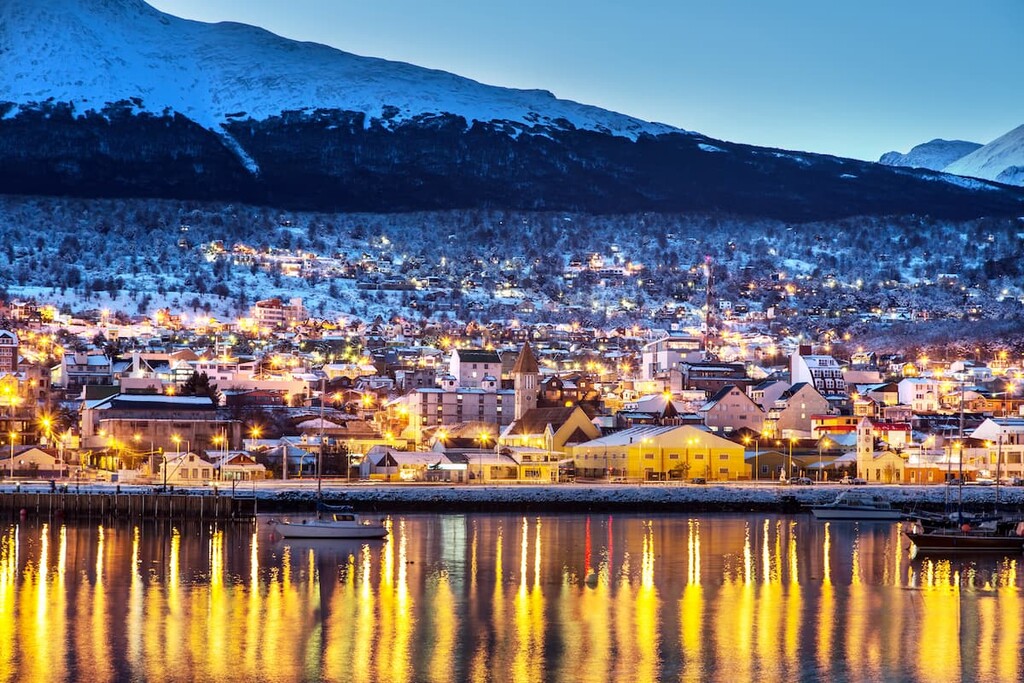
Situated in the heart of one of Patagonia’s most stunning areas, El Calafate is a city of some 6,000 people. It offers superb access to the Perito Moreno Glacier, Cerro Chaltén, and Cerro Torre, so it’s a nice starting point for your Patagonia adventures.
Furthermore, there is also a paved road that connects El Calafate to the town of El Chaltén, which provides unparalleled access to Monte Fitz Roy. So, if you’re looking to see Patagonia’s iconic landscapes, El Calafate and El Chaltén are the places to be.
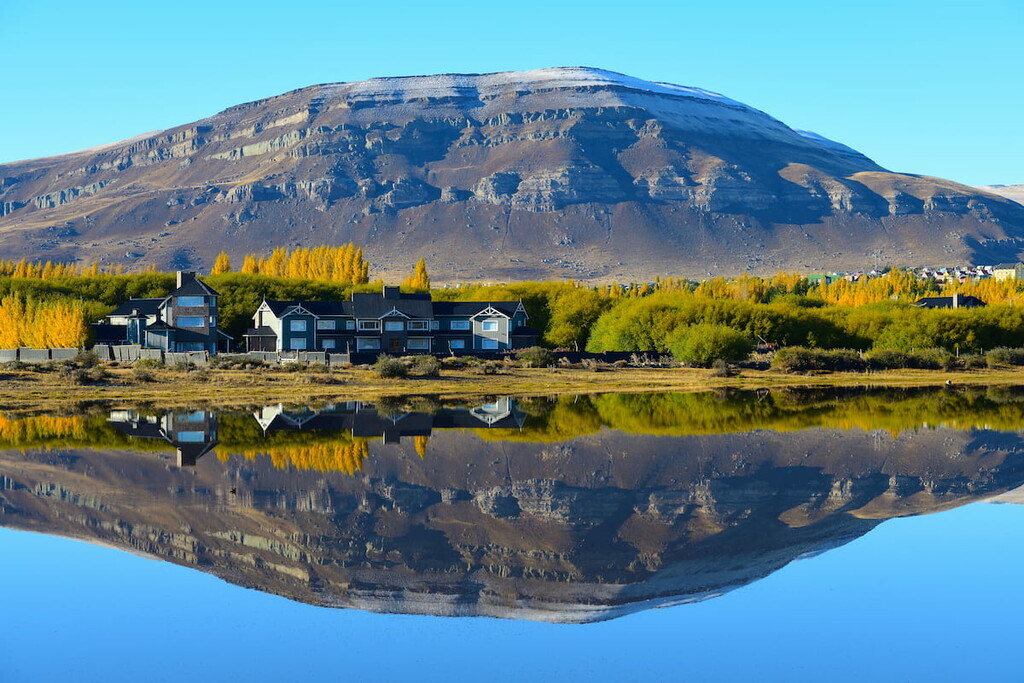
Explore Argentina with the PeakVisor 3D Map and identify its summits.








ultra
volcano
andes-6000ers
chile-ultras
argentina-ultras
ultra
volcano
andes-6000ers
argentina-ultras
ultra
volcano
andes-6000ers
chile-ultras
argentina-ultras
ultra
volcano
andes-6000ers
chile-ultras
argentina-ultras
ultra
volcano
andes-6000ers
chile-ultras
argentina-ultras
ultra
volcano
chile-ultras
argentina-ultras
